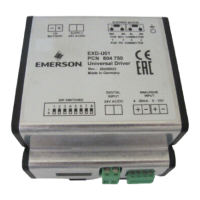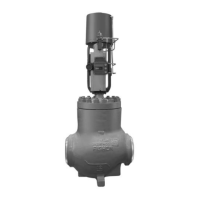Safety
Information
Introduction Installation
PowerTools
Pro Software
Communications
How
Motion
Works
How I/O
Works
Configuring
an
Application
Programming
Starting and
Stopping
Motion
Starting and
Stopping
Programs
Parameter
Descriptions
Drive
Parameters
Used by
EZMotion
Diagnostics Glossary Index
EZMotion User/Programming Guide 119
Revision A8 www.controltechniques.com
inactive when the Source is inactive. Making an assignment "Active Off" means that the Destination will be active when the
Source it is assigned to becomes inactive, and will be inactive when the Source is active.
The polarity of the assignment can also be changed to Custom when required. Custom polarity allows you to make a
Destination activate and inactivate based on two different Sources.
NOTE
Destination functions that initiate motion (Jog.PlusInitiate, Jog.MinusInitiate, Index.#.Initiate, Home.#.Initiate, and
Gear.Activate) should not be set to "Active Off". This could cause motion to initiate on loss of I/O Power.
Default polarity for a new assignment is "Active On". There are two methods that can be used to change the polarity of an
assignment.
Polarity Button Method
Select both the Source and the Destination to be changed. Once selected, the Polarity button will become available in the
lower left corner of the view. Click Polarity and change the settings as desired in the Polarity dialog box. Click OK to apply the
changes.
Right Click Method
Point to the specific assignment you wish to change polarity on and right-click. A shortcut menu box will appear, choose
Polarity. The Polarity dialog box will appear. Change the Polarity settings as desired and click OK to apply the changes.
Only Show Assigned
This check box removes the unassigned Sources and Destinations from the view. It allows the user to quickly see how many
Sources and Destinations have been assigned.
User Level
The User Level filters the available assignments. The User Level is changed on the Options menu at the top of PowerTools
Pro Toolbar. From the Options menu select Preferences then User Levels.
Easy mode filters out all but the most commonly used Sources and Destinations. Detailed mode filters out less, expanding
the list of Sources and Destinations for more complex configurations. Too Much mode does not filter at all and provides all
Sources and Destinations.
8.6.2 Selector View
The Selector view allows the user to configure the Selector object. The selector uses a binary to decimal conversion, which
requires fewer I/O points than direct assignments. Figure 129 shows an example of the Selector view.
Figure 129: Selector View
The selector helps to minimize the required number of inputs and outputs to initiate different actions. The selector limits the I/
O by using a conversion from binary to decimal. Figure 130 shows a block diagram of the Selector Object.

